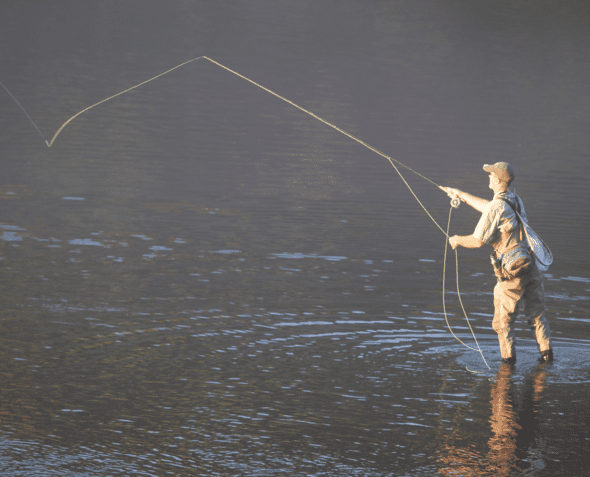
BRANSON, Mo. — MDC biologists say the finding of a fungus-like infection on some trout at Lake Taneycomo is a reminder about problems caused by handling fish too much.
The light-colored cotton-like growths some anglers have reported finding on trout that have been caught at Lake Taneycomo in recent weeks have been identified as saprolegnia. Although frequently referred to as a fungus, saprolegnia is a water-borne mold. This mold produces white or light-brown growths that adhere to a fish’s skin or gills.
Saprolegnia pathogens are naturally occurring in fresh-water environments that feature cold water and can affect any fish species, but trout seem to be the most susceptible. These pathogens usually infect fish whose protective mucus layer has been compromised due to increased handling or minor injury. Compounding the problem are low dissolved oxygen levels that are prevalent in Taneycomo’s water each fall.
Saprolegnia is non-transmissible to humans, but MDC never recommends people to consume meat from diseased fish or wildlife.
For trout, a severe saprolegnia infection can lead to debilitation, lethargy, and mortality. Light infections will heal if conditions allow. Since the molds are present in the water, fish do not transmit these infections to each other. Thus, harvesting infected fish from the lake is not necessary to prevent further spread, However, there are several things anglers can do to reduce the number of trout that become infected by this mold.
- Reduce handling of fish and be gentle while handling a caught fish to ensure the fish’s mucus layer stays intact.
- Minimize the fight time for fish by using heavier line to get fish in quickly. Fish that are fought for extended periods of time in water that has a low dissolved oxygen level have a harder time recovering.
- If using a net; use one made of soft, woven, knotless nylon, or rubber to help protect the mucus layer of the fish.
- Release fish immediately if not keeping them and avoid keeping a fish out of the water for a long period of time.
- Try to avoid foul hooking fish. (Foul hooking is when a fish is caught by a hook in any part of its body other than its mouth.) Foul hooking can damage the mucus layer and increase stress due to prolonged fight time.
While this infection may cause mortality in some trout, these recent findings of saprolegnia are not likely to have an impact on Taneycomo’s overall trout population. The numbers of both rainbow and brown trout in MDC’s 2024 electrofishing sampling were higher than they’ve been in several years and both the size and quality of fish continue to be among the highest values on record.
In regards to saprolegnia, anglers are encouraged to report any sightings of infected fish to MDC. Reports and photos of infected fish can be sent MDC Fisheries Biologist Shane Bush at [email protected].
Tips on how to handle fish can be found in MDC’s “Handling and Releasing Fish,” a free booklet located at most MDC offices where publications are found. This publication can also be downloaded through MDC’s Free Publications website at:














